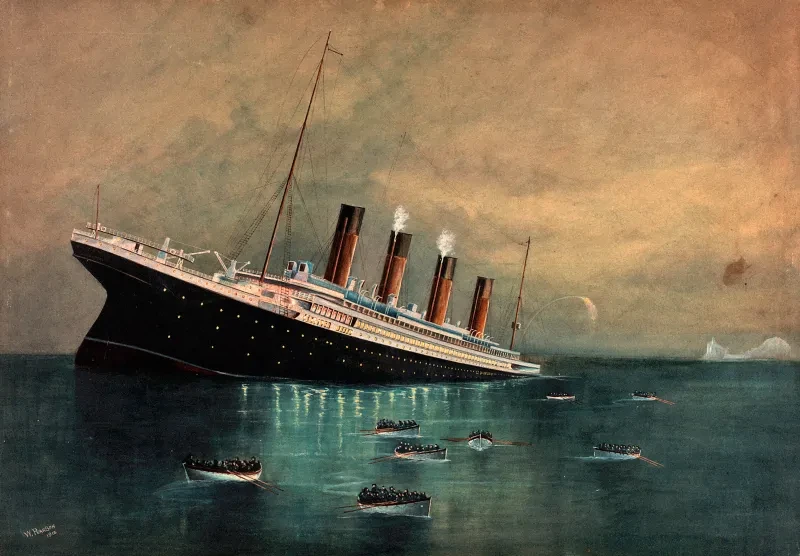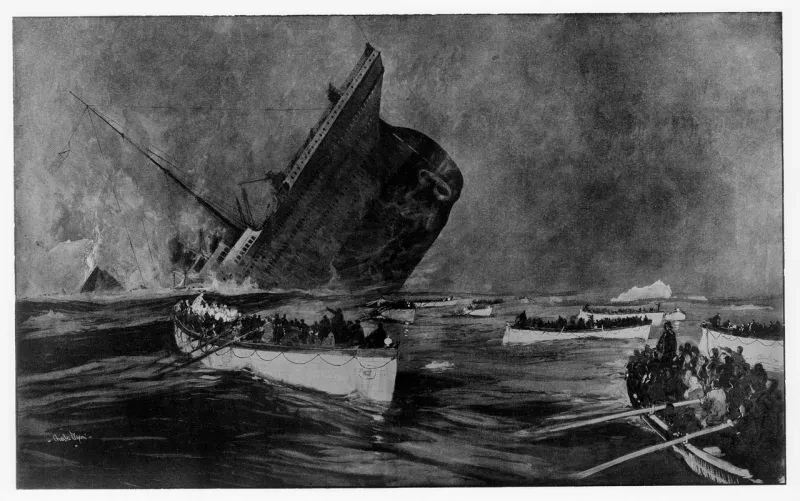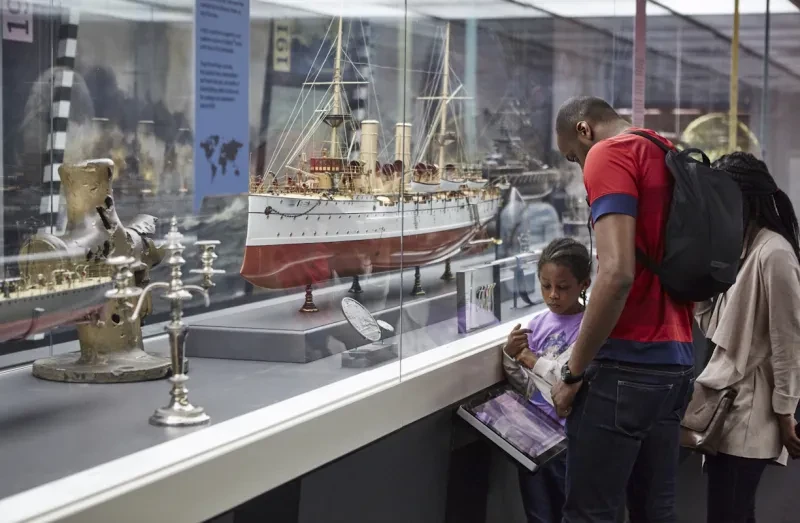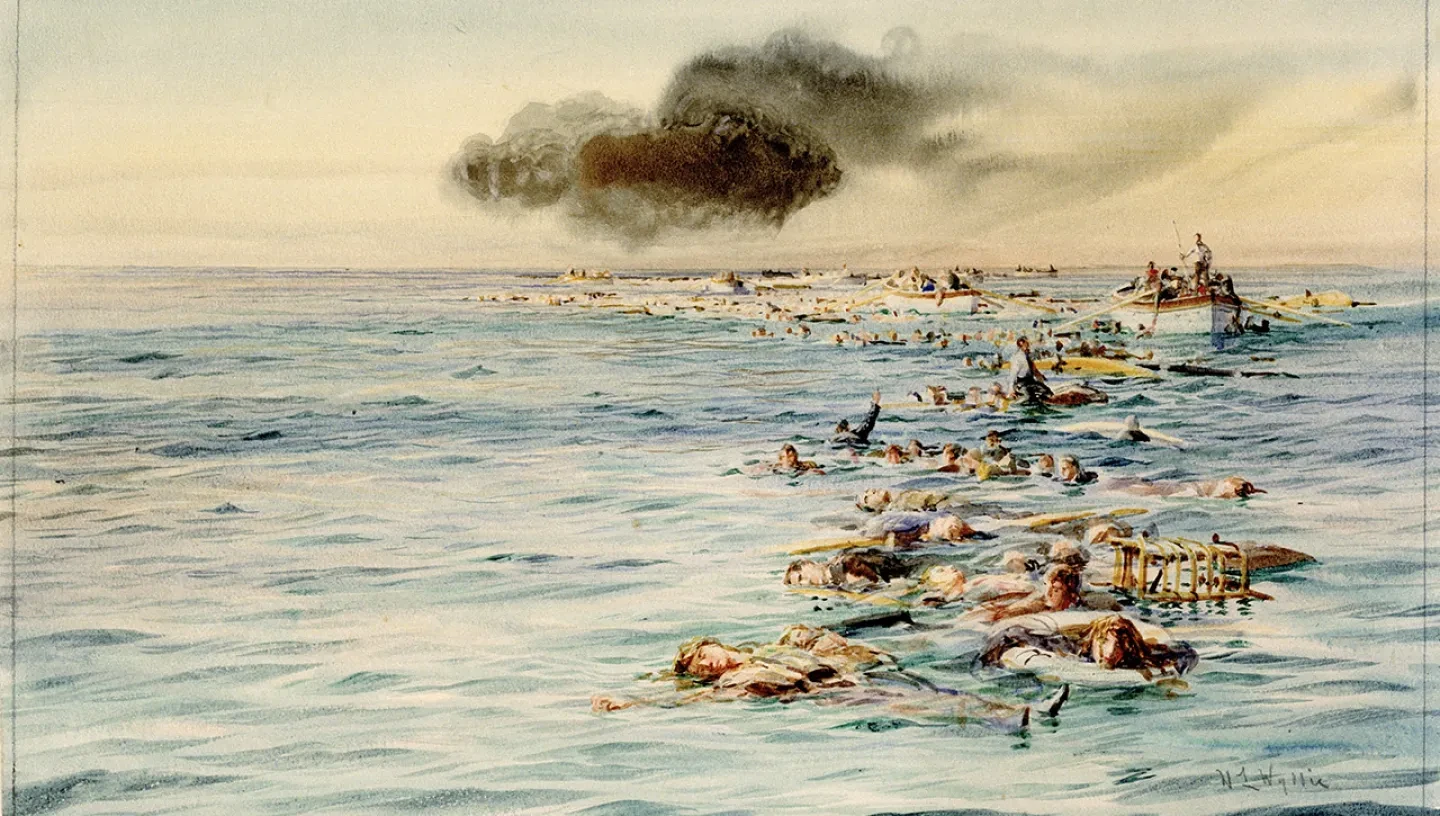
The Sinking of the Lusitania
The Lusitania was one of the great cruise liners of her day. The sinking of the passenger ship off Ireland in 1915 will live in infamy.
How big was she?
At 31,550 gross tons, Lusitania was 787 ft in length (239.9 m), had a beam of 87.8 ft (26.7 m) and could carry nearly 2200 passengers. Her steam turbines produced 76,000 shaft horse power which could drive the ship along at a brisk 26 knots.
Who owned the Lusitania?
She was built by John Brown & Company of Clydebank, Scotland, for the Cunard Steam Ship Company Limited of Liverpool. The ship was launched on 7 June 1906.
Cunard ordered the Lusitania and her sister ship the Mauretania, to rival other shipping companies as the fastest and most luxurious liners on the transatlantic service to New York at that time.
What happened to the Lusitania?
Early in the First World War (1914–18), the German Government declared British waters to be a war zone and said that they would attack shipping there.
The Lusitania sailed to Britain from New York on 1 May 1915 with 1959 people on board. Extra lookouts were posted as she approached Ireland, and the latest submarine reports were radioed to her.
At around 14.15 on 7 May, the Lusitania was about 15 miles south of Ireland off the Old Head of Kinsale when a German submarine U-20 torpedoed her.
A second explosion followed which has never been fully explained, and the ship sank in less than 20 minutes with the loss of 1,198 lives. The sinking caused a huge outcry around the world.
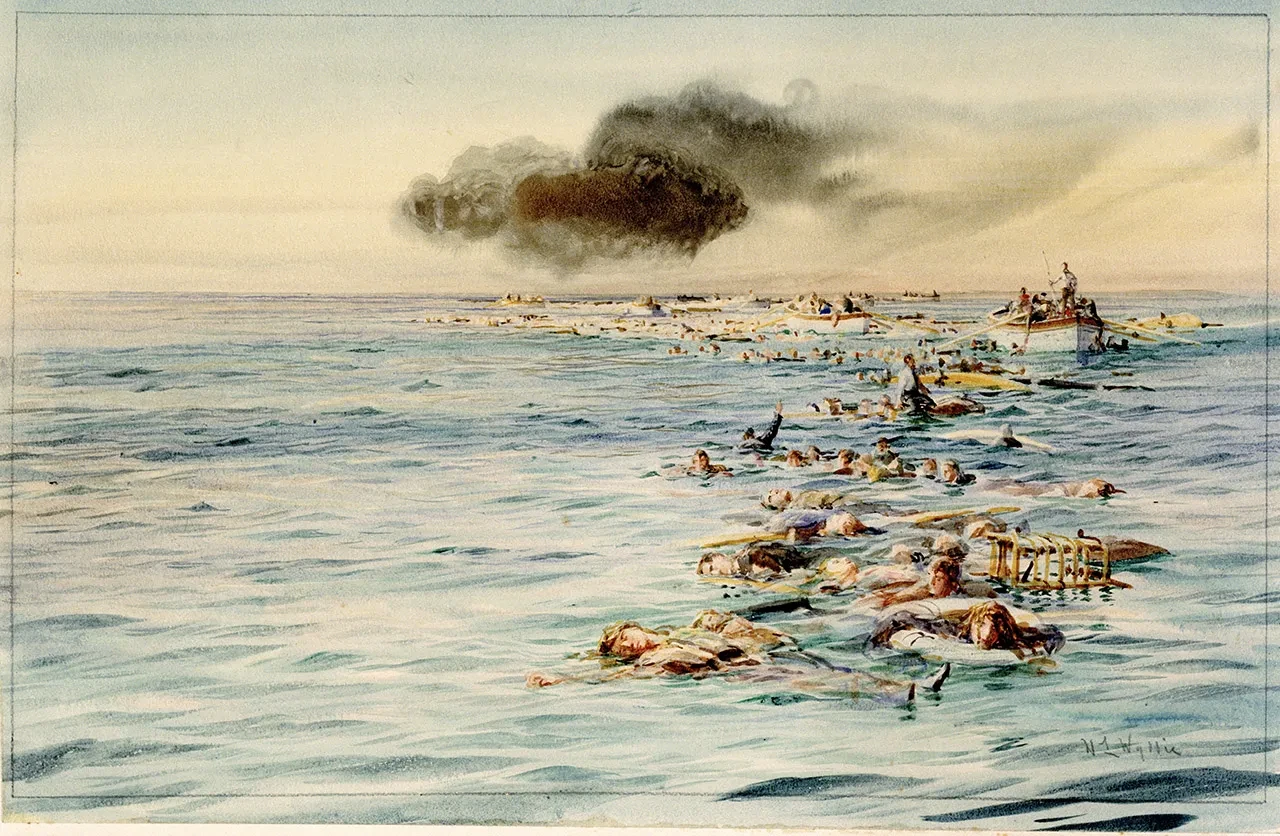
Aftermath
The attack on an unarmed passenger vessel was regarded in Britain and the USA as an atrocity. The Germans claimed and celebrated it as legitimate based on their assertion that the ship was carrying military equipment and stores from America, which the British authorities denied.
While the German claim was later shown to be technically correct because there was a quantity of ammunition on board, the reaction was thought to be disproportionate to the threat.
The sinking was politically counterproductive, with 128 neutral Americans killed. The incident was used as an example of the brutality of the Germans, and played a role in bringing the USA into the war in 1917.

Visit the National Maritime Museum
Header image: The Track of the "Lusitania" by William Lionel Wyllie, Royal Museums Greenwich collection (PAF1553)

